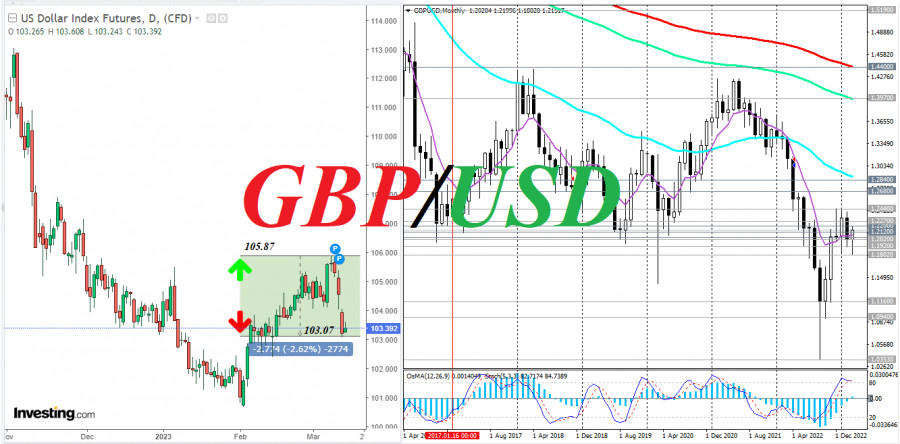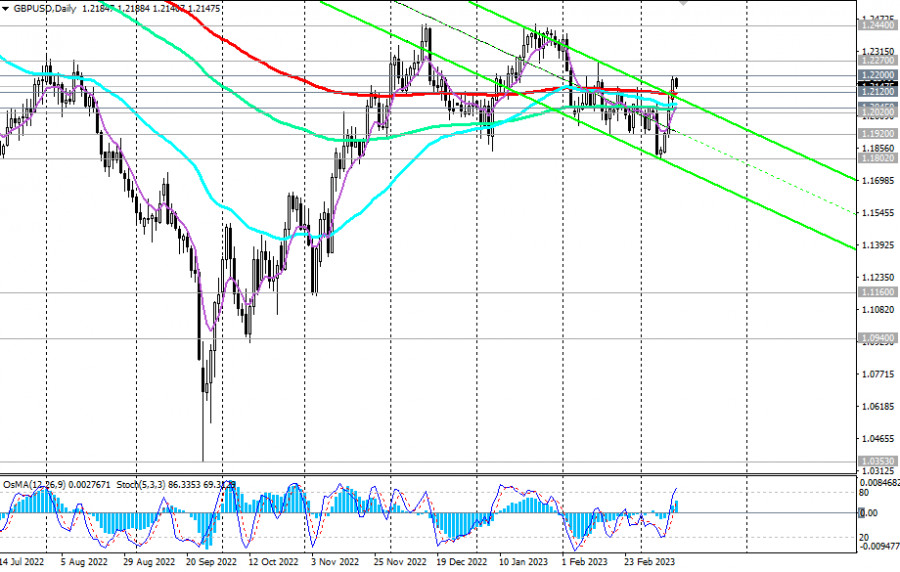

As reported by the Office for National Statistics (ONS) on Tuesday, the number of citizens applying for unemployment benefits in February fell by 11,200 (against the forecast 12,400 and the previous value of 30,300), and unemployment in January remained at the same level of 3.7% (against the forecast 3.8%). At the same time, regular wages, excluding bonuses, rose by 6.5% year-on-year in January (against the expected 6.6%).
The data presented suggest that the rate of wage growth has slowed markedly in recent months and may have peaked, while unemployment has stabilized at 3.7%. This data also indirectly suggests that inflationary pressures on the economy and the Bank of England may be easing on further tightening of its monetary policy ahead of next Thursday's meeting.
The Bank of England may raise the interest rate again at this meeting. At the same time, economists suggest that the BoE may raise the interest rate by +0.25%, instead of the +0.50% market expectation, and may even take a pause in hikes, given the banking crisis in the United States and the situation in the British economy.
As the latest data released on Friday showed, manufacturing output fell 0.4% in January (against the forecast of -0.1% and 0% a month earlier), while total industrial output was -0.3% (versus the forecast of -0.2% and +0.3% in December). On an annualized basis, data on the volume of industrial production in the UK was -5.2% in January, worse than the -5.0% forecast.
Like many other risky assets and the world's alternative to the dollar, the pound rose earlier this week as it reacted to tensions in the U.S. banking sector. Yesterday, the GBP/USD pair reached the local 4-week high and 1.2200 resistance level.
However, today, the pair, like most dollar pairs, is declining amid the strengthening of the dollar. The pound also reacted rather restrainedly to today's publication of data from the British labor market.
Economists believe that as long as the Bank of England maintains a cautious stance on inflation, unlike the Fed and the ECB, the pound is likely to remain under pressure, continuing to depreciate relatively.
As for today's news, market participants will follow the publication (at 12:30 GMT) of fresh inflation data in the U.S. CPI growth is expected to slow in February to +0.4% from +0.5% in January and to 6.0% from 6.4% year-on-year.
Meanwhile, despite rising today, the U.S. dollar remains under pressure: the Fed announced a $25.0 billion Bank Term Funding Program (BTFP) that will provide troubled financial institutions with access to short-term credit. Economists have already called this project "new quantitative easing in disguise," which also indicates a partial departure from the hawkish stance.
In addition, investors are focusing on the Fed's monetary policy outlook in the new environment created by the collapse of Silicon Valley Bank (SVB) and Signature Bank. In particular, former Assistant Secretary of the Treasury Paul Craig Roberts recently said that the Fed now has two options: cut interest rates or turn to the issue of money. In both cases it is a negative scenario for the dollar and the U.S. economy.
Recall that the next meeting of the Fed will be held on March 21 and 22. Before the events last Friday and the weekend, many economists and market participants were counting on a tougher Fed rate hike (+50 bps) based on Powell's speeches last week in Congress, where he made a number of tough statements. Now the probability of such an increase tends to zero.

As of writing, GBP/USD was trading near 1.2147, 53 points below yesterday's high of 1.2200. Many economists believe that we should not expect growth above this mark. Even despite the U.S. banking crisis, the pound remains vulnerable to the dollar, including due to the difference in the positions of the U.S. and UK central banks. The breakdown of the 1.2100 mark may be the starting point for the resumption of the downward dynamics of GBP/USD.